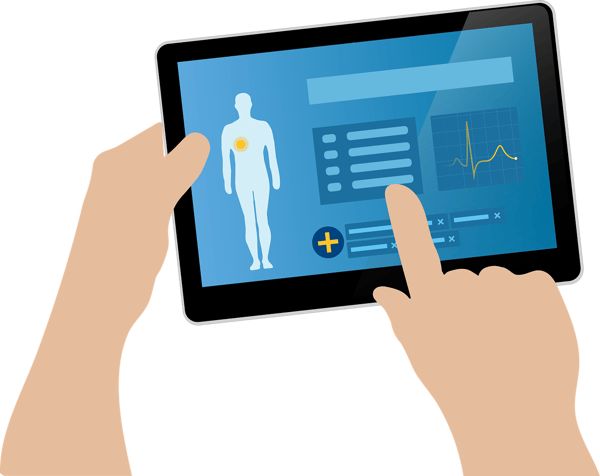
How Easily Can Patients Access Their Dermatology Medical Records?
Dermatology medical electronic records (EMR) are an important part of a patient's care plan, however until very recently patients often could not access their information. From 2014-2017, patients’ ability to access their medical records has jumped a whole 42%.1 This results in better informed patients who contribute to improved healthcare awareness. This article introduces the features contained in new dermatology software that help drive data sharing and empower patients to actively participate in their ongoing skin health.
1. Involved patients translate to better medical services
Traditionally, dermatology consultations are based on a limited exchange of professional expertise with patients. Due to the matter of patients’ lack of technical knowledge to understand complex concepts, or a doctor’s lack of time, it is not usual practice to involve patients in every step of a medical exam or pathology analysis. Absence of proper communication, however, can have detrimental effects in the way both sides deal with the results obtained.
With reference to a typical situation in dermatology, the inspection of a potentially malignant skin lesion and its proper discussion and handling are crucial for successful diagnosis and treatment. Not sharing the results with a patient can cause further stress and anxiety, negatively impacting their reaction to subsequent procedures needed to counteract the disease. Similarly, on a dermatologist’s side, readily sharing results can expedite the treatment path to follow, according to the patient’s agreed course of action.
Conventional EMR software offer limited possibilities to store and share information with patients. Restrictions on accessibility are the main hindrance to making patients’ profiles available, added to the lack of interconnectivity and interoperability features. A change in paradigm was introduced with cloud-based EMRs that go beyond these barriers and allow the digital sharing of medical records in a secure and private way.
- MoleScope tool: the use of the MoleScope dermoscope combined with its dedicated phone app and web portal gives patients the ability to submit their own dermoscopy images for dermatologist’s analysis. Within a few days, patients can retrieve their online medical records and see results as soon as they become available.
- Notes tool: this feature offers professionals the chance to include their patients in the notes written for a diagnosis or pathological analysis of a case. This provides the opportunity to initiate a fruitful interaction to determine what symptoms have been experienced since the last in-clinic consultation and what the next steps will be.
In a world of mainstream information sharing, the secure and private access to medical records is becoming an common practice in dermatology services, implying that patients have better access to their own data. Newly cloud-based EMRs software are greatly contributing to this purpose by offering solutions based on remote connectivity for streamlined data distribution. As new trends in technology continue to advance, dermatology EMR solutions stand out as the pace setters for driving patients’ right for access to their information that, in turn, directly impacts their lives and future.
-The MetaOptima Team
Would you like to remain connected with your patients & colleagues while providing streamlined care and receiving a new source of income? sign up for a demo today!
1-https://patientengagementhit.com/news/patient-portal-access-use-reach-52-of-healthcare-consumers
Topics: DermEngine Dermatology EHR Dermatology EMR Dermatology Software Dermatology EMR Software Dermatology EMR Solution Dermatology EMR System






